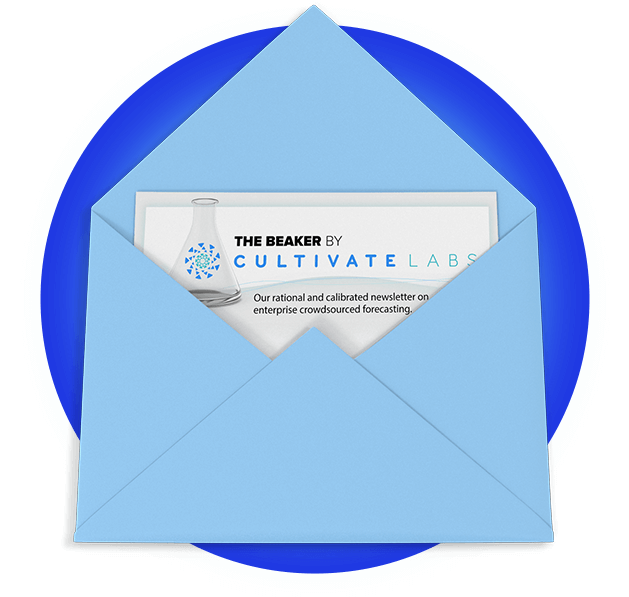Disrupting Product Development Using Internal Crowdsourcing
By Adam Siegel on April 25, 2016
Sourcing new ideas in the form of "idea drives," surveys, brainstorming sessions, retreats, and more formal innovation management systems to generate new product ideas and features is a common practice among most large organizations today. But once those ideas are collected and a few receive funding, the use of the “crowd” ends. Using crowdsourcing only at the front-stages of the product development cycle means organizations are missing out on a big opportunity to further tap the wisdom and knowledge of their entire organization.
For the purposes of this post, let’s assume a simplified product development lifecycle that looks like this:
- Idea / feature inception and feasibility analysis;
- Prototyping and product development
- Sales and marketing planning
- Release; then
- Refinement
Now let’s assume you have a couple internal crowdsourcing capabilities at your disposal internally, crowdsourced predictions, and crowdfunding.
Crowdsourced Predictions
Crowdsourcing predictions allows
you to get probability-based predictions from a wide range of people over time.
For example, you might ask the question: “Will we complete Phase 2 of the
project by December 31?” People from all over the organization could respond as
the project progresses. So one day someone may say there’s a 70% chance of
completing the phase. Two weeks later based on some additional information,
they may change that prediction to 40%. Get lots of people doing this from
different perspectives and you have a credible, un-biased source to understand
“ground truth” you didn’t have before.
Internal Crowdfunding
Crowdfunding has grown incredibly
popular in the public domain, both to help fund creative projects and
inventions on platforms like Kickstarter, and to crowdsource the funding of
entire companies. But crowdfunding can also be applied internally using some of
the same approaches, only the money people are using to invest is company
money, and the ideas being generated are from employees of the company. The key
advantage is instead of a few, potentially biased executives deciding on ideas
to be funded, a more credible signal from a large number of people is captured
instead. We’ve been working with companies to use crowdfunding at the very
beginning of a product development lifecycle, but there’s no reason why it
could not be applied to later stages of funding as an idea
progressed.
We think crowdsourcing will eventually be a primary way tasking is completed internally too, but we won’t step too far in to the future for the purposes of this post!
So looking back at our product development lifecycle, here’s how our two crowdsourcing capabilities could be applied:
1. Idea / feature inception and feasibility analysis
-
Internal Crowdfunding: Define a
specific scope for collecting ideas, e.g. current strategic pillars, an
operations problem, or inclusion of the next set of features in a product.
Ask people to submit and collaborate on ideas along with a small budget for
what would be needed to do a feasibility study and perhaps a proof of
concept. Define an overall budget and sub-divide it between participants,
then let them invest in the ideas they’d like to see developed. Any ideas
that meet its requested budget, officially become projects.
-
To help scope the ideas requested and
to provide context, we can ask predictions about industry trends and
competition could be crowdsourced across the organization.
2. Prototyping and product development
-
We can ask project management
questions, like ability to meet timelines and feasibility questions, impacts
on the supply chain, availability of materials, and cost to produce.
3. Sales and marketing planning
-
As we prepare to put the new product
on the market or introduce a new version, we can begin to ask predictions
about initial sales performance, customer support issues, how marketing
campaigns will perform, and how competitors will react. Traditionally all of
these predictions are made by a relatively small group of people like the
marketing team and demand planners, but this would be an opportunity to gauge
a much broader internal audience like the product development team, customer
support personnel, and others who may have a perspective.
4. Release
-
Now that the product is released, we
can begin a regular lifecycle of predicting sales and other key performance
metrics, while also keeping an eye on competitive activity, industry trends,
the regulatory environment or anything else that may effect the performance
of the product.
5. Refinement
-
As we refine the product, we can
begin the lifecycle all over again and use crowdfunding to prioritize what
new capabilities should be added (or fixed) to the product.
Companies we work with have already begun applying these methods to take advantage of the knowledge, wisdom, and experience of their own people, dramatically increasing the value of their investment in employees as they gain collective insights they never had before. Even more importantly, employees feel like they are much more invested and engaged in the product development lifecycle.
The days of narrowly defined role descriptions and strict organizational lines are already starting to blur, and internal crowdsourcing is only going to accelerate (and enhance) that organizational transformation.
enterprise crowdsourcing enterprise crowdfunding crowdsourced forecasting

